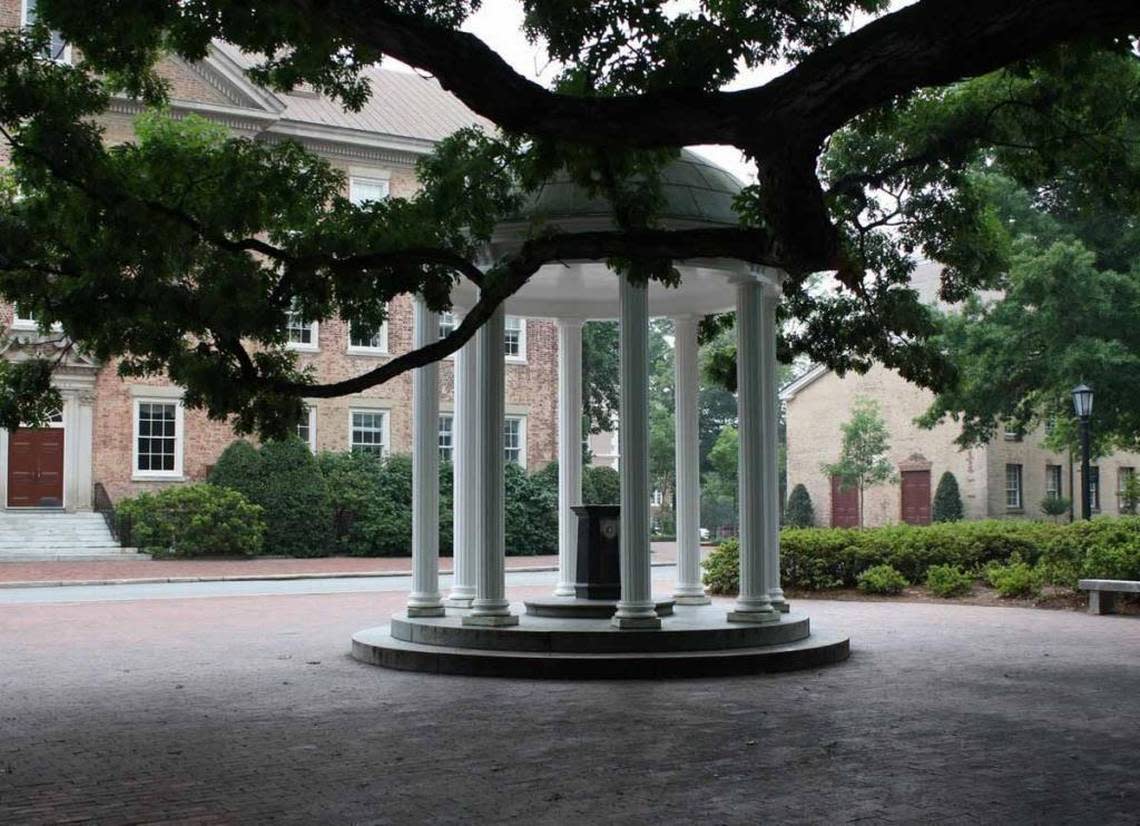Stop it with “I paid my student loans.” Here’s what NC schools cost back then.

When the UNC System was consolidated 50 years ago, its purpose was more or less to offer a good education, at a good price, to the state’s residents. One noticeable difference over the last half century has been a dramatic rise in the cost of college.
Appalachian State University, UNC-Chapel Hill, and NC State University all had tuition and fees less than $500 in 1972. Now, each of them charge more than $7,000 annually; the latter two charge nearly $9,000 each.
Since Biden announced student debt relief yesterday, there have been countless conservatives yelling about people receiving “handouts” and not paying for college the same way everyone else did. The reality is that funding cuts from the Reagan administration to the 2008 recession have resulted in rising college costs forced on students most everywhere. If costs of college rose with inflation from my parents’ time in college, my yearly tuition at UNC-Chapel Hill should have been a little over $1,000. Instead, it was more than $6,600.
In 1972, it was possible to pay for your college tuition with a minimum wage job. That year, North Carolina’s minimum wage was $1.45 for non-farming jobs. It was 15 cents lower than the federal minimum wage. Today, it’s $7.25 — the same amount as the federal minimum wage, and an amount that hasn’t changed since 2008 despite growing inflation and cost of living expenses.
It cost $225 a year — $422 with fees — to attend UNC-Chapel Hill in 1972. Without taxes, you could pay off a year of education in 291 hours of minimum wage work, or around seven weeks of full-time work at minimum wage. That’s less than the length of summer break at the university.
UNC-Chapel Hill’s tuition and fees add up to $8,751.46 for the 2022-23 school year. It means that, without factoring in taxes, you’d need to work 1,207 hours at the state’s minimum wage to cover the cost. That’s more than 30 weeks of work, and more than twice the length of the university’s summer break.
According to a timeline of the school, NC State University’s tuition was $357 a year in 1972 (it’s unclear whether or not this includes fees). If you worked around 246 hours — around six weeks, full-time — at the 1972 minimum wage, you’d be able to pay off this cost. You’d only have to work half the summer at this rate.
This school year, NC State’s tuition and fees cost $8,918.25. At $7.25, it’d take a little over 1,230 hours and almost 31 weeks at a full-time, minimum wage job (once again, without taxes) to pay off your tuition and fees. That’s twice the length of summer break.
Appalachian State University has probably gone through the most transformation since 1972, only a few years after it transitioned from a teacher’s college to a full-fledged university. Although the school doesn’t have the 1972-73 school year on its timeline, its tuition and fees totaled $303.82 for the 1973-74 year, hitting a new high. If you worked a little less than 210 hours at the state minimum wage, or a little more than five weeks of full-time work, you could knock that out. That’s a third of a summer break.
Today, App State’s tuition and fees are $7,289 per year. It would take more than 1,005 hours, or 25 weeks full-time, to pay this off with a minimum-wage job. That’s 10 weeks more than their summer vacation offers.
Of course, none of this includes the rising costs of housing, food, transportation, and textbooks, nor does it take into account the way the state’s cities have grown at different rates. It does, however, tell us something that any recent college graduate will tell you: “paying your own way” is not what it used to be.
